Aufnahme, Abmischung und Mastering
Veröffentlicht am 30/01/2023
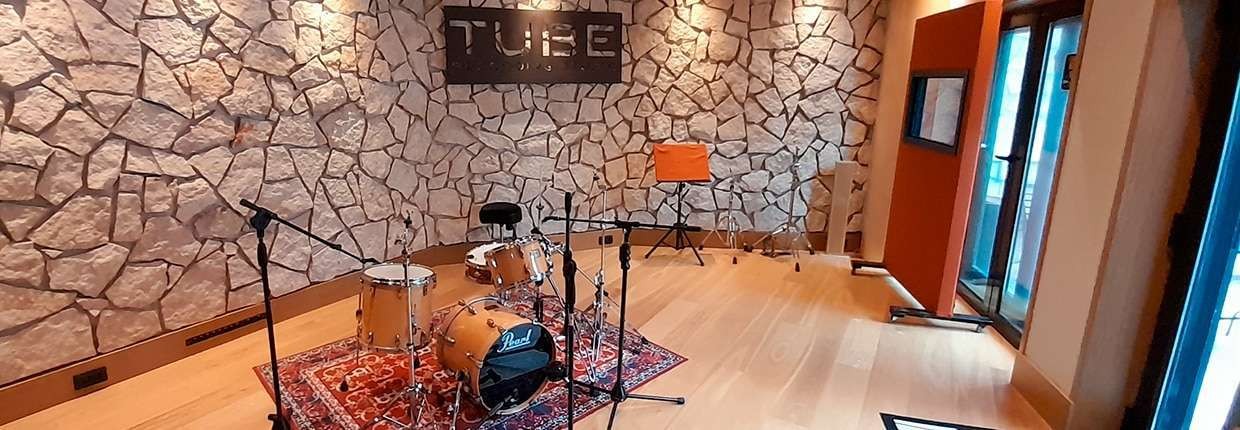
A few weeks ago we went to the Tube Studio, close to Rome, to meet Francesco Lupi.
Francesco, a musician and sound engineer, has been tracking and mixing albums for the Tube Recording Studio since 2012.
He is also live sound Engineer and Production Director for the Fara Music Festival and the Sabina Music Summer.
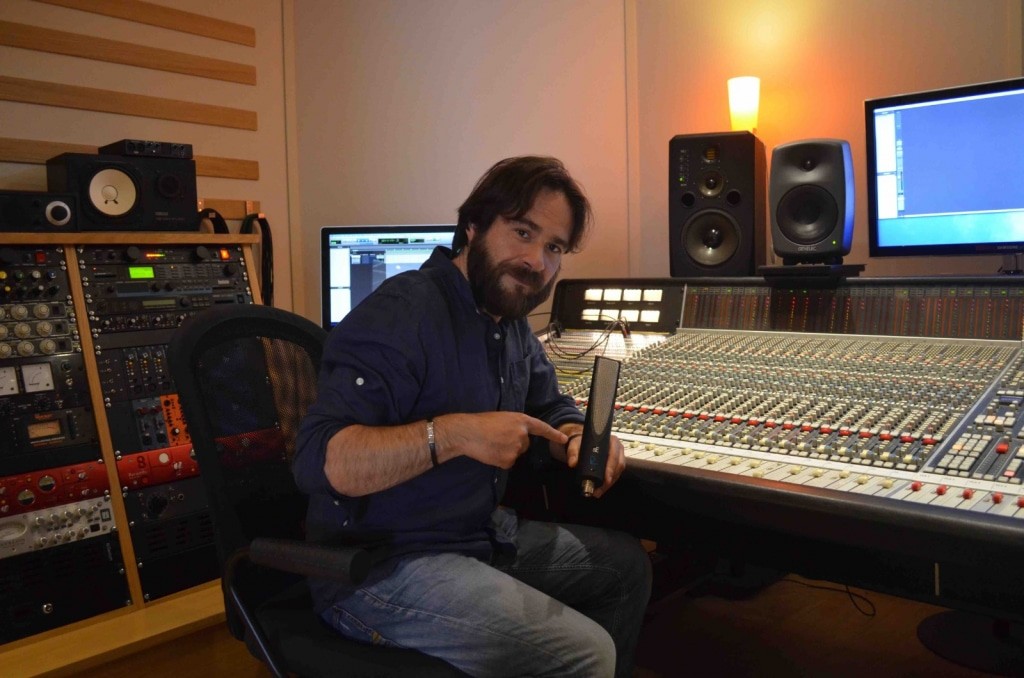
His credits include collaborations with: Kurt Rosenwinkel, Lionel Loueke, Enrico Pieranunzi, Francesco Cafiso, Roy Hargrove Quintet, Roberta Gambarini Quintet, Shai Maestro, Kevin Hays, Gilad Hekselman, Jonathan Kreisberg, Kadri Voorand, Fabio Zeppetella, Reuben Rogers, Matt Penman, Greg Hutchinson, Rosario Giuliani, Gabriele Mirabassi, Stefano Di Battista, Dario Deidda, Roberto Gatto, Danilo Rea, Rita Marcotulli.
Francesco has been several times awarded by the Referendum Popolare of the Jazz It magazine in the Top Ten list of the Italian Jazz sound engineers, he also has got several international awards. Among those, the Grammy Estone for the best 2019 album with Armupurjus by Kadri Voorand is worth mentioning.
The goal was to discuss the tracking and mixing of the Jazz drums given the fact that the Tube Studio has, among other, a solid experience in the Jazz field as can be easily understood by browsing the Tube Studio Guests page.
The studio is located in a hilly area not far from Rome.
--------------------
Beyond the studio facilities there are relaxation areas and the Tube House (a 40 square meter loft with wi-fi, HVAC and 4 beds).
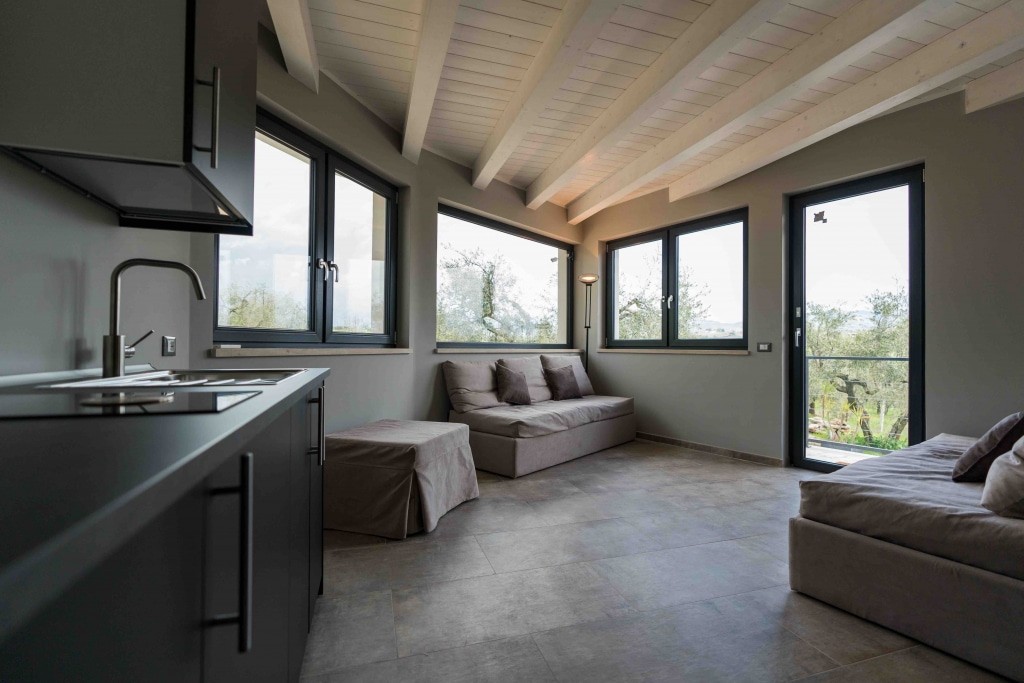
This allows for a continuous operation cycle where relaxation, tracking and mixing sessions, pauses among the nature of the landscape, lunches and dinners merge together to provide a unique experience.
Francesco has been detailed and deep in telling us about his approach to tracking and mixing of the Jazz drums. Let’s go deeper.
The drums are tracked in the Miles Room, a 35 square meters by 3 m whose front wall is made of rocks and the ceiling holds wooden diffusers. This set up makes the room quite alive acoustically.
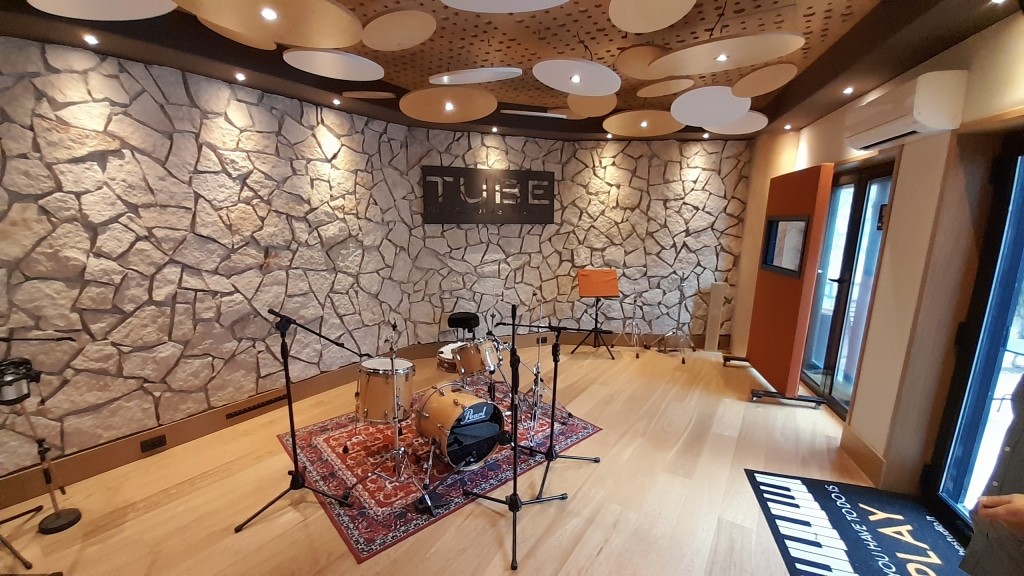
Once the drummer has completed the drum set assembling and tuning, the first activity is to listen to the whole sound to understand the interaction between the drums and the room. This to verify the absence of resonances to avoid problems on the recording step.
In case of resonances those have to be treated acting on the instruments by varying tuning or other variables. Recorded resonances won’t get out easily even in the most sophisticated mix.
This is a quite critical step because the interaction between the musician and the sound engineer is a lot more on the side of the musician and his/her way of perceiving his/her own sound.
Is this the time where the sound engineer has to use all his/her relational capabilities to set a collaborative relation where every one could contribute to the optimal result.
The next step is to choose the right overhead mics. For this it has to be considered the drummer’s approach to the playing and the way he/she uses to tune the drums and then check the balance of the cymbals versus the drum heads.
If the overall sound is treble rich it is better to use ribbon mics. This can happen when the drum heads are tuned high or the cymbal contribution is strong.
Coles or sE Electronics RNR1 (where Rupert Neve put his hands on) are chosen in this case.
For more balanced sounds Francesco uses a couple of cardioid Schoeps MK4 that are very good in transient capturing and seem to be pretty good for the Miles Room response.
The proper overhead positioning is the key for a good overall sound as it provides the foundation of the entire drum set sound to be further enhanced with proximity microphones.
Mic phase is set by controlling the distances from the snare together with the phase cancellations coming from the room reflections to achieve a good balance.
Once the overhead mics are done it is the turn of close miking on drum heads and Hi Hat.
The preferred choice for drum heads of tom and floor tom is the Senhheiser MD421.
For snare, after a long search, Francesco found the ideal solution with a dynamic mic from the ‘70. A Revox M3500 bought trusting some web information that has become the first choice to track such a complex source.
Thanks to the clear room response there is no need to put any mic on the snare bottom.
The kick, in Jazz music, always has the resonant head without any holes. The tracking is handled with two mics. A dynamic AKG D112, used for the sound edge, is placed off center and a condenser mic that can either be a Neumann U87 or an AKG C414 placed on the center.
The condenser mic is used to give body to the kick. The highest bass content comes from the center of the drum and that is the reason why the condenser mic is almost centered.
The Hi Hat is tracked via a Sennheiser E914.
Once caught by the microphones, the signals need to pass through the mic preamps.
Francesco says that the mic-preamp correct match is key for a proper result and every mic performs at its best once coupled with a specific preamplifier.
The choice depends also on the instrument to be tracked.
For the overhead (an so for the Schoeps mics) the Portico di RND mic pres are used. Those have the capability to smooth the transients a little bit to complement in a very effective way the velocity of the microphones.
The API 512C (500 series preamps) are used for the D112 on the kick, the Revox M3500 on snare and for the Sennheiser E914 on the Hi Hat. Tom and floor tom are taken by Sennheiser MD421 with Telefunken V672 preamps.
Francesco prefers not to use further outboard for tracking, getting advantage of the natural compression of a well driven preamp to generate the right amount of harmonics.

The output of the pres goes directly into the converters (so, for tracking, the SSL 4000 available in the control room doesn’t get used).
The console comes into the game for mixing. Its objective, with the drums, is to find the right blend between the overheads and the close mics. Usually 80% of the sound comes from the overhead.
Francesco prefers not to use Room/Ambiance mics because they are difficult to handle and, often, can cause more problems than value to the sound.
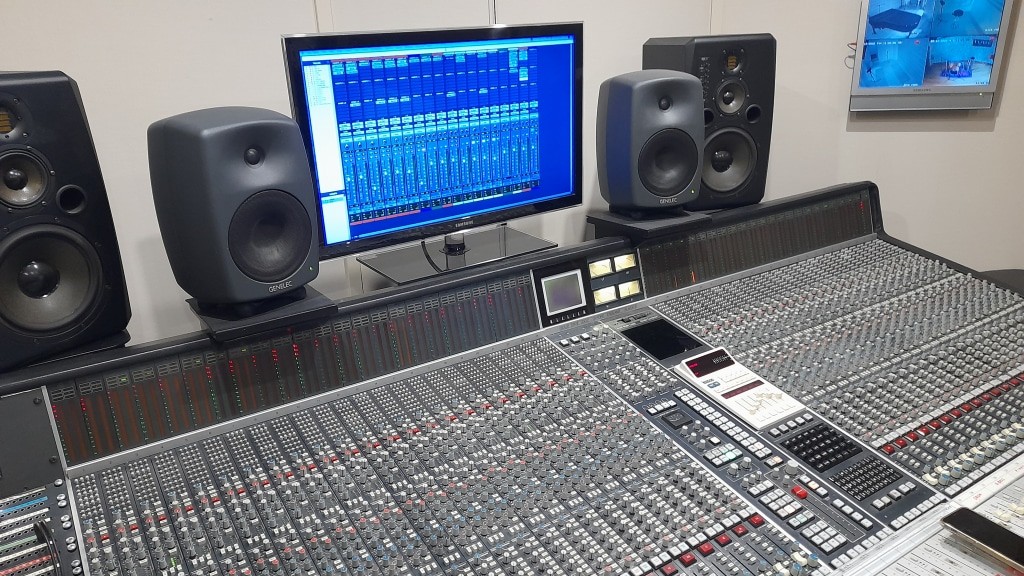
All the tracks are processed via the SSL 4000 console coming from the late ‘80. Sometime also via stems summed and compressed with the installed G Bus compressor. The console automation is not used and, if needed, Pro Tools seems to be more effective and aligned with the fast pace required in the current productions.
Sometimes limiters (eventually hardware ones) are put into the game to avoid being too much concentrated to the track levels and giving the proper attention to the right overall sound.
At the Tube studio there are several rooms for tracking piano, guitars, vocals and other instruments. The Duke’s Room (more than 40 square meters) hosts a grand piano (Yamaha C7) and allows, if needed, for ensemble tracking.
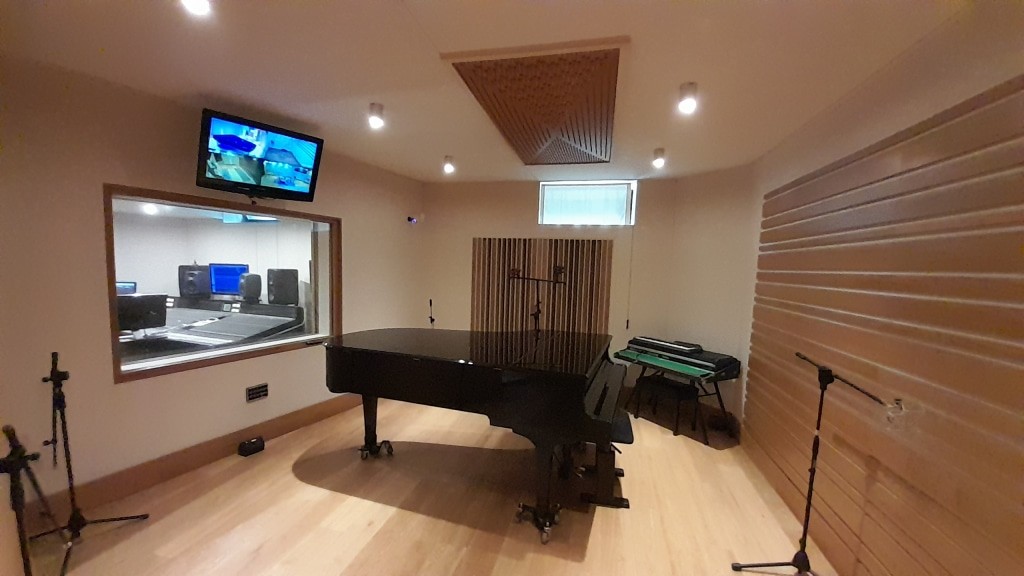
Other rooms are available for tracking and further facilities allow for sessions where the musicians only have to think about their music.
Several types of mics and outboards are available for other instruments.
Ribera R12 mics are coupled with Focusrite Red 8 pres that (the mic’s producer agrees) perform very well in this case.
Neve 1073 LB are used for brasses and guitars. The Cranborne Audio Camden 500 are enrolled for their very clean sound (with no Mojo) or for their distinctive saturation when needed.
The studio also owns a set of Argentini L97 preamps. Those, according Francesco, are good for just about everything.
A Universal Audio 4-710d gets also used thanks to its capability to blend between tube and solid state sound.
Let’s close this post saying a big thanks to Francesco Lupi for his availability and competence (even as a musician since he has a degree in Orchestra Conduction).
In the time we have spent at the Tube studio we have had the chance to appreciate the passion and the willingness to search for the best to provide the clients with a top quality service.
The same top quality that, we believe, can be found in all the information we have learned while working on this post. Talk to you soon!
Sei dabei und sichere dir 5% Rabatt auf deine nächste Bestellung!

Leerer Wagen